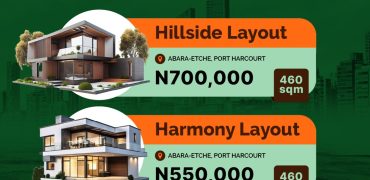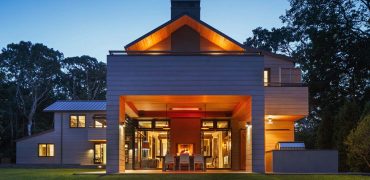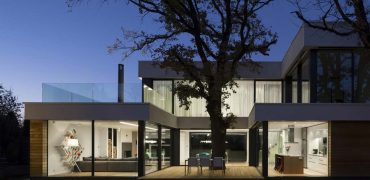Bamboo has been used as a building material for centuries, but in recent years, it’s gained new recognition in modern architecture. Known for its strength, flexibility, and sustainability, bamboo is proving to be one of the most versatile and eco-friendly materials available, inspiring architects to create structures that are both beautiful and functional.
Why Bamboo?
Bamboo stands out because it grows rapidly, reaching maturity in just 3-5 years compared to decades for traditional wood. It’s naturally resistant to pests and can withstand extreme weather conditions, making it ideal for a range of climates. Additionally, bamboo absorbs carbon dioxide and releases 35% more oxygen than similar plants, helping to improve air quality.
But bamboo’s appeal goes beyond its environmental benefits. Its lightweight and high tensile strength make it a powerful building material, able to withstand heavy loads, while its flexibility allows it to absorb the energy from earthquakes, making it perfect for earthquake-prone areas.
Unique Features of Bamboo Architecture
Bamboo architecture takes full advantage of the material’s natural properties, using creative designs that emphasize its unique appearance and structure. Here are some key features of bamboo architecture:
- Natural Aesthetic Appeal
Bamboo’s natural color and texture give buildings an organic, earthy look. Architects often use bamboo poles in their raw form to showcase its natural grain, creating a rustic yet elegant aesthetic. The cylindrical shape of bamboo adds to the visual interest, giving structures a rhythm and flow that is often highlighted by natural light. - Strength and Resilience
Bamboo’s strength-to-weight ratio rivals that of steel, and it can be stronger than concrete in compression. This makes it suitable for large and complex structures like pavilions, bridges, and multi-story buildings. It’s particularly popular in tropical and subtropical regions, where its ability to withstand heavy winds and rain makes it an ideal choice. - Flexibility and Earthquake Resistance
Bamboo can bend without breaking, allowing architects to design curved, flowing shapes that would be difficult to achieve with other materials. This flexibility also makes bamboo structures more earthquake-resistant, as the material can absorb shock and movement, reducing the risk of structural failure during seismic events. - Sustainability and Low Environmental Impact
Bamboo’s fast growth and minimal need for pesticides make it a sustainable choice. Additionally, bamboo is renewable and biodegradable, leaving a smaller carbon footprint than traditional materials. By using bamboo, architects can create eco-friendly structures that blend into natural environments and promote sustainable building practices. - Cooling Properties
Bamboo’s natural structure allows for breathability, which is especially useful in warm climates. Bamboo walls can ventilate naturally, keeping interiors cool without relying heavily on air conditioning. This has led to the popularity of bamboo buildings in tropical countries where reducing heat and humidity is essential.
Iconic Bamboo Architectural Projects Around the World
- Green School, Bali, Indonesia
One of the world’s most famous bamboo structures, the Green School in Bali, is designed to inspire students to learn in harmony with nature. Built entirely from bamboo, it features open-air classrooms, a towering heart-shaped main building, and unique spaces that promote environmental awareness. The Green School exemplifies how bamboo can be used to create large-scale, intricate structures that are also highly sustainable. - Bamboo Cathedral, Medellín, Colombia
Designed by Colombian architect Simón Vélez, the Bamboo Cathedral is an awe-inspiring structure that combines strength with beauty. Vélez, a pioneer in bamboo architecture, designed the cathedral with vaulted bamboo arches, creating a spiritual atmosphere and displaying bamboo’s structural capabilities. - Nguyen’s Bamboo Wing, Vietnam
Vo Trong Nghia, a Vietnamese architect known for his innovative use of bamboo, designed the Bamboo Wing as a multipurpose space that’s both striking and functional. The structure is made of bamboo arches that rise like wings from the ground, blending with the surrounding landscape. The Bamboo Wing shows how bamboo can create both artistic and utilitarian spaces, as the building is used for events, exhibitions, and gatherings. - Ibn Khaldun University Library, Algeria
Combining traditional design with modern architecture, the Ibn Khaldun University Library uses bamboo as a shading and decorative element. Bamboo slats help control the entry of light, cooling the interior and creating a warm, inviting space for students. This structure illustrates how bamboo can be integrated with other materials to create beautiful, functional hybrid buildings.
Challenges and Innovations in Bamboo Architecture
While bamboo is incredibly versatile, there are challenges in working with it, such as its susceptibility to rot if untreated and its lack of standardization compared to traditional building materials. However, advances in bamboo treatment processes are helping overcome these issues, making it more durable and long-lasting. Architects and engineers have also developed prefabricated bamboo panels and reinforced bamboo beams that enhance its structural stability.
Innovations are also making bamboo architecture more accessible worldwide. For example, cross-laminated bamboo, a technique that combines layers of bamboo with adhesive, is being used to create panels and beams for walls and floors, offering new possibilities for bamboo in modern construction.
The Future of Bamboo Architecture
Bamboo architecture is gaining global attention as a sustainable building solution, and its use is expanding beyond tropical areas. More architects are incorporating bamboo into designs as they recognize its environmental benefits and potential for creative, visually stunning structures. As techniques and treatments improve, bamboo may well become a mainstream material, helping to address issues like deforestation and carbon emissions in the building industry.
Bamboo architecture represents a unique blend of tradition, innovation, and sustainability. Its natural beauty and resilience make it a powerful choice for creating spaces that are in harmony with the environment. As we look to the future, bamboo offers an inspiring example of how we can build more responsibly while enjoying the beauty and benefits of nature’s original green building material.






